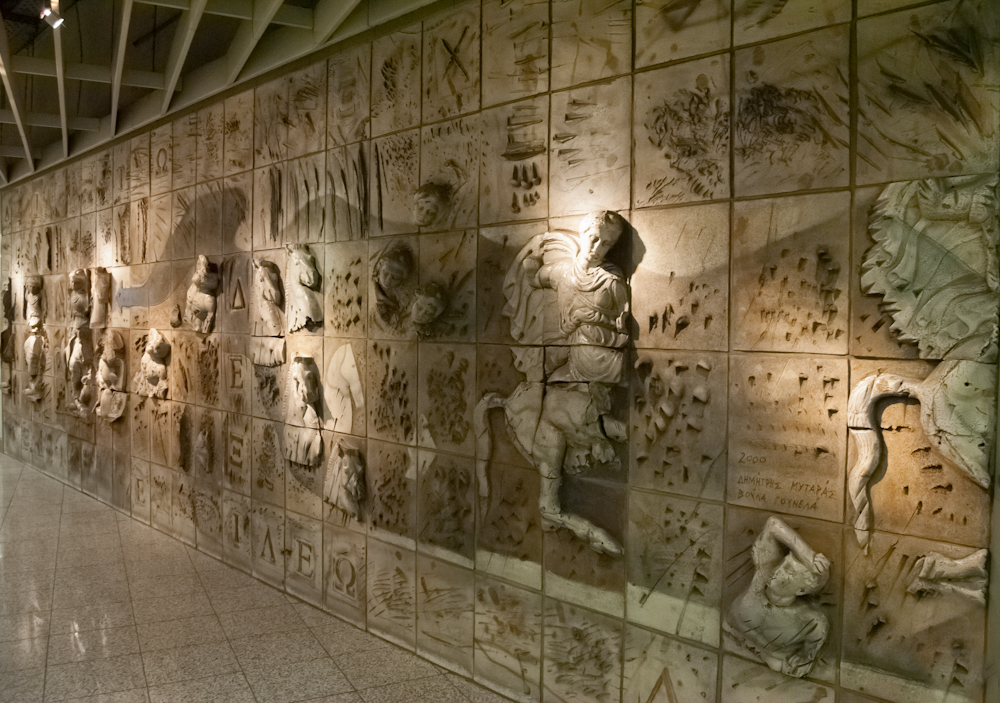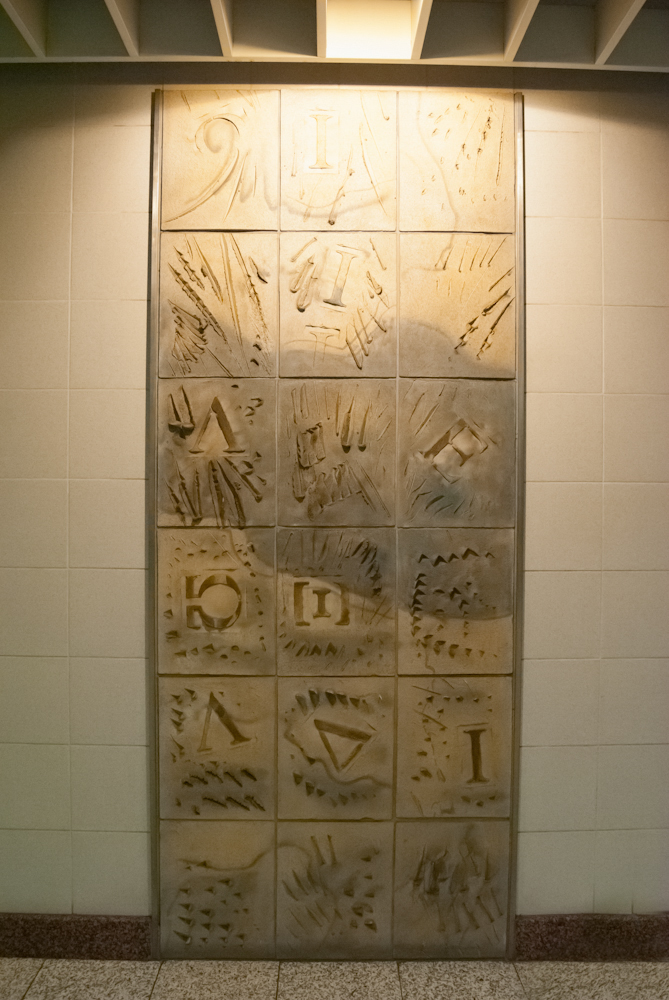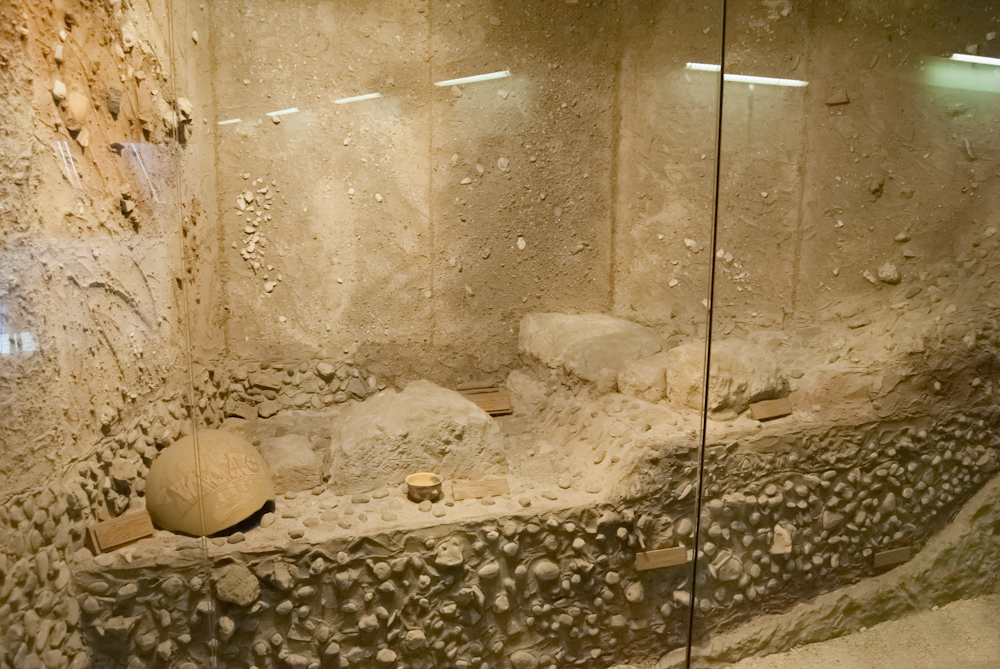Dafne Metro Station
Antiquities and contemporary art creations "converse" at the passengers level of the Dafne metro station.
Location
Timeline
Modern and Contemporary era (1821 - )
2000 Inaugurated on November 15th.

Antiquities and contemporary art creations "converse" at the passengers level of the Dafne metro station.
Home > Athens > History and Archaeology > Archaeological parks and monuments > Greater Athens > Ancient History > Classical period > Dafne Metro Station









“Dafne” metro station is a small free museum. On the station’s ticket level, an excavation model and a stratigraphic representation are exhibited, i.e. a vertical cut on the ground, which highlights the historical phases and their findings. In addition, replicas of these findings such as amphorae are on display. The name of the station comes from the name of the area, and its 2 side platforms are at a depth of 18m. We also see the ceramic work “Tribute to Dexileos” (2000), by Dimitris Mytaras and Voula Gounela, inspired by the ancient funerary stele of Dexileos. The blue arrow indicates the hero, and the work has 5 phases: entry, conflict, ejection, gallop and exit.
The ancient funerary stele of Dexileos is exhibited in the Archaeological Museum of Keramikos and is a world sculptural masterpiece. It depicts the twenty-year-old Athenian horseman Dexileos, who was killed in a battle with the Corinthians and is represented on a horse killing the enemy with a spear. The similarity with the representation of Saint Demetrius in Christian icons is striking, where the saint kills a dragon in the same way. “Dafne” station was the first southern terminal station of line 2 (2000-2004). During its construction, the ancient bed and the northern bank of the Kalogiron stream were discovered. The stream was covered in the 1970s. The findings at the site date from prehistoric times (3rd millennium BC) to early Byzantine (6th-7th century AD). Several wells were used throughout these centuries and ceramic vessels of all periods were found in them. Moreover, ancient residential remains were discovered at the station. The findings are related to the area of ancient Alopeki and the “Astiki Odos” (Urban Road), which connected Athens with Sounio and the area of Lavreotiki.
Collective work (2014), Navigating the routes of Art and Culture, Part 1, Athens, Ministry of Culture and Sports
Field observation by scientific editors
2000 Inaugurated on November 15th.
Share